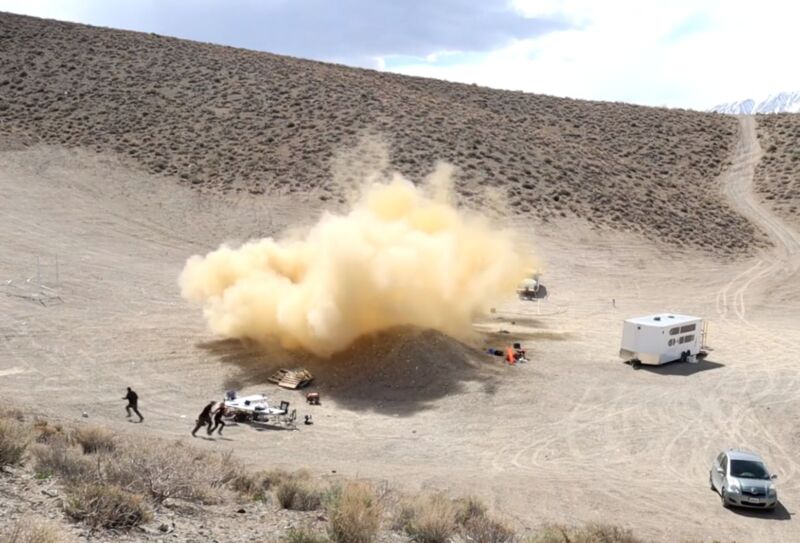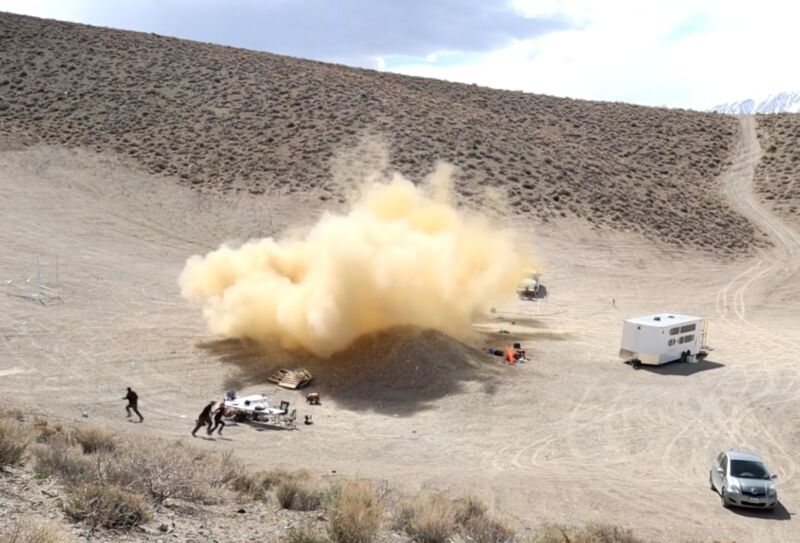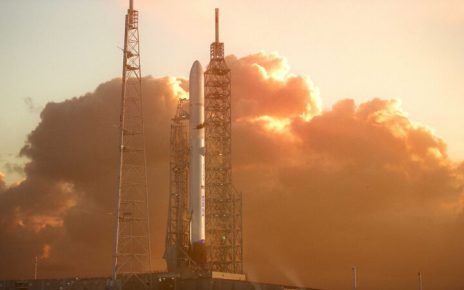
Enlarge / A Pythom Space video from March 19 shows employees reacting to an expanding cloud of dust and exhaust. (credit: Pythom Space)
There’s a small rocket company based in eastern California named Pythom Space. And like a lot of space startups, it has big dreams. In this case, co-founders Tina and Tom Sjögren have the goal of flying to Mars in 2024—and if not then, by 2026.
“We see this as a new world,” Tina Sjögren said recently. “When Columbus sailed to America, there were both better boats and sailors. But no one else did it. He did. All it took was three weeks. It was not difficult; it was fear that held everyone back. It was believed that one would fall over the edge of the earth. Or be eaten by sea monsters. He showed… that was wrong.”
This seems naïve, of course. Even SpaceX, which from the beginning was well-funded and able to hire excellent early employees, is still years away from sending humans to Mars after its founding in 2002. But the Sjögrens are undaunted. “You have to work hard, but you do not have to be very smart,” Tina Sjögren added.





